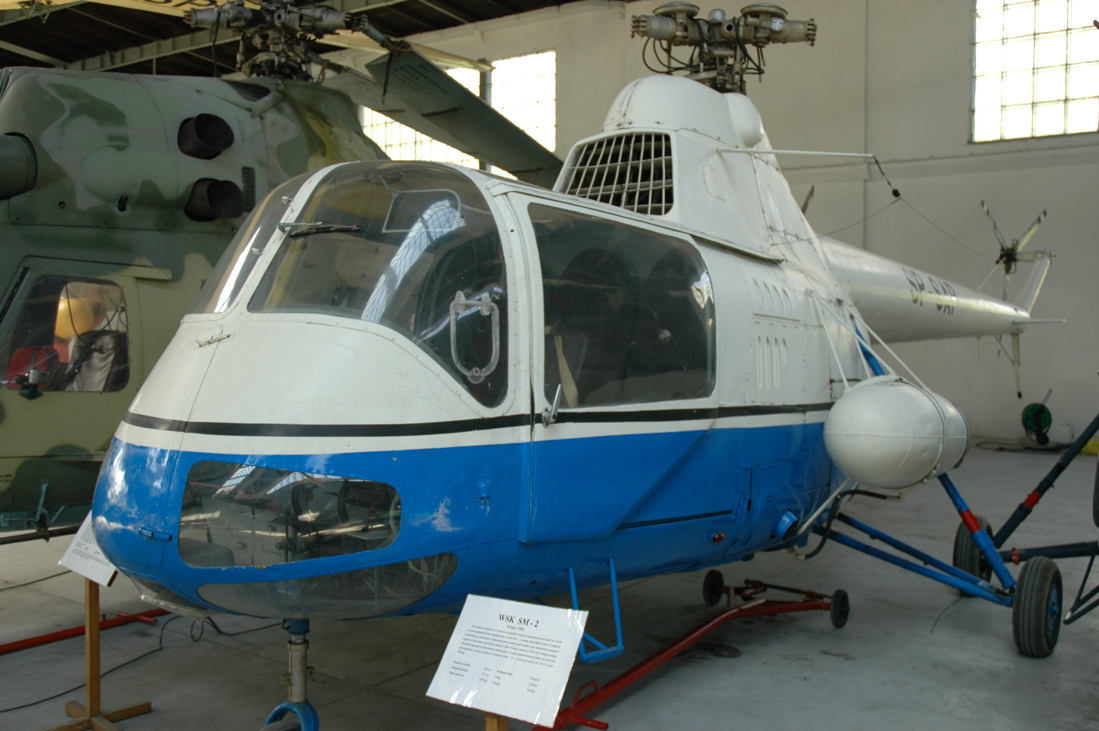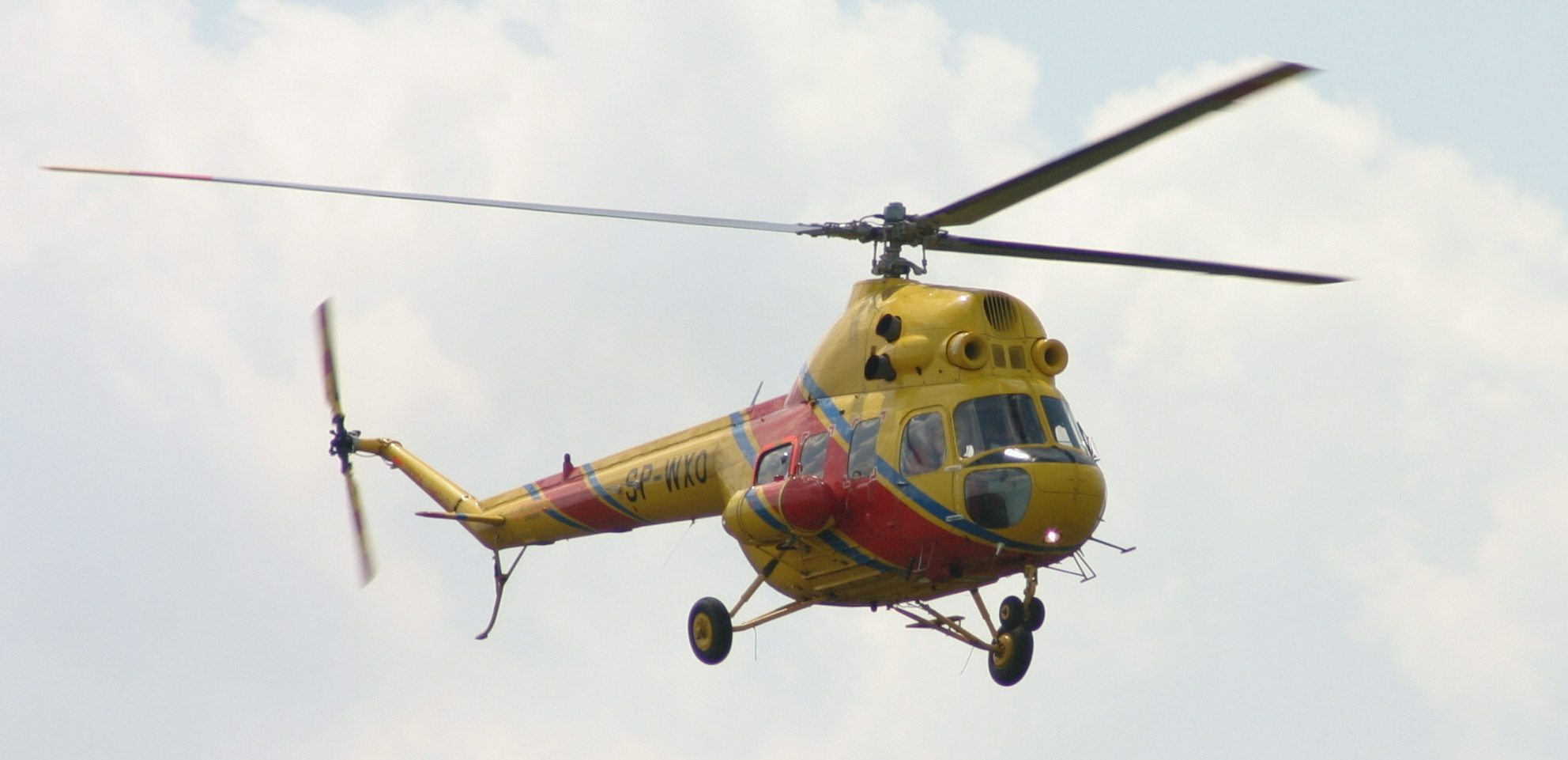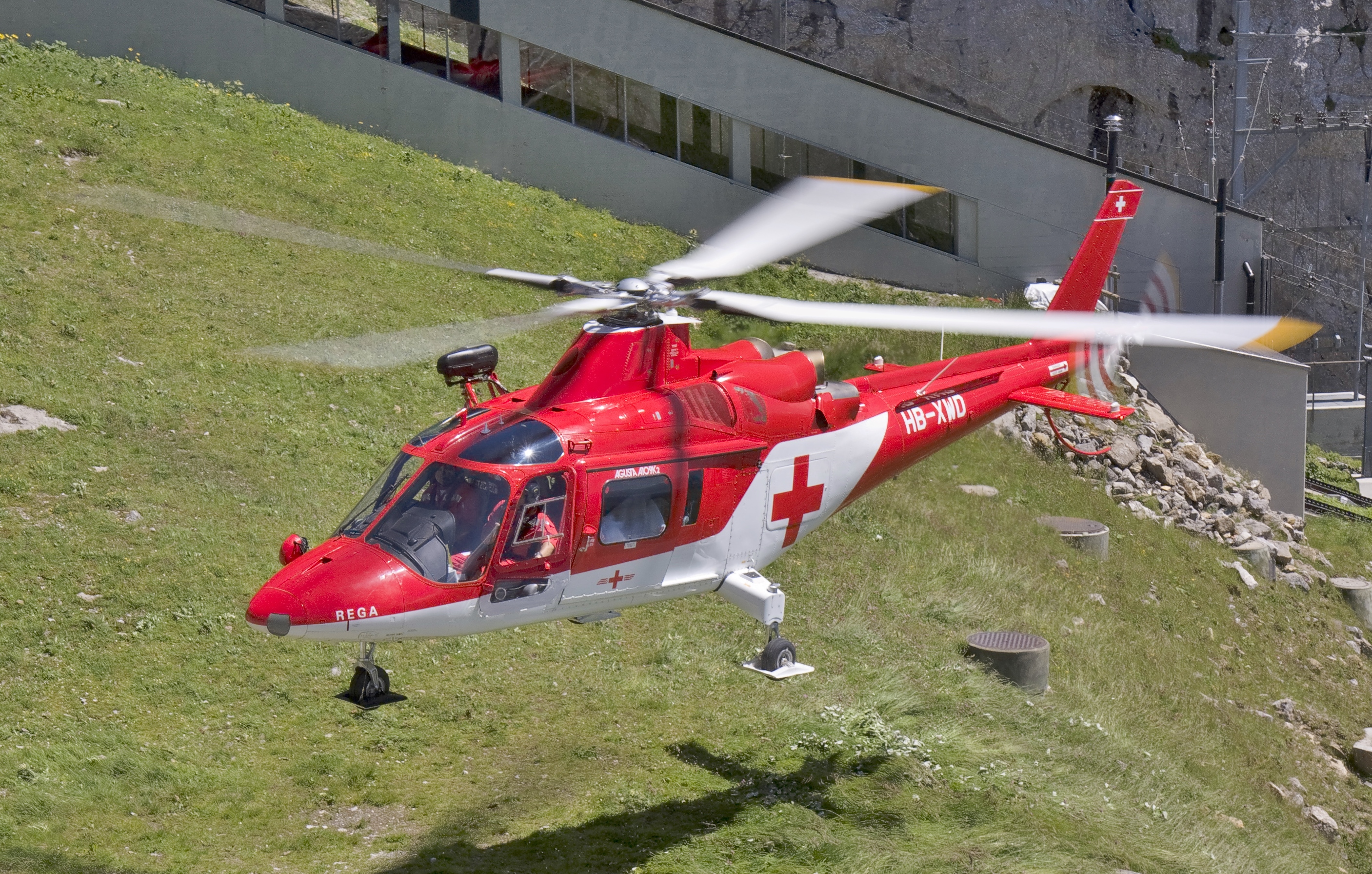|
PZL-Ňöwidnik
PZL-Ňöwidnik S.A. (''Wytw√≥rnia Sprzńôtu Komunikacyjnego PZL-Ňöwidnik S.A.'') is the biggest helicopter manufacturer in Poland. Its main products are PZL W-3 Sok√≥Ňā and PZL SW-4 Puszczyk helicopters. In early 2010 the factory was acquired by AgustaWestland, today Leonardo. History History of plant establishment dating back to 1920, when in Lublin opened the first aircraft factory " Plage i LaŇõkiewicz". After World War II part of the senior instructors staff incorporated into the newly formed "Wytw√≥rnia Sprzńôtu Komunikacyjnego". In 1951 a third national aerospace factory, WSK-Ňöwidnik, was built in Ňöwidnik, and in 1957 it was renamed to WSK PZL-Ňöwidnik. Since 1956 it has become one of the world's major helicopter manufacturers, producing helicopters under the Soviet licence, starting with the SM-1 (Mil Mi-1). Ňöwidnik was the main producer of the Mi-1 and exclusive producer of the widely used in the world Mil Mi-2. Since the late 1980s, Ňöwidnik has been producing a Poli ... [...More Info...] [...Related Items...] OR: [Wikipedia] [Google] [Baidu] |
PZL SW-4 Puszczyk
The PZL SW-4 Puszczyk (en: tawny owl) is a Polish light single-engine multipurpose helicopter manufactured by PZL-Ňöwidnik. Following a protracted development, the SW-4 entered service in 2002, the primary operator of the type has been the Polish Armed Forces. The SW-4 was further developed by PZL-Ňöwidnik and corporate parent AgustaWestland into an optionally piloted vehicle, the ''SW-4 Solo''. From 2016 onwards, the type has been marketed to civil operators as the ''AW009'', while the SW-4 designation is used for the military market. Development Origins The design of the SW-4 helicopter originates from the 1960s, during which period it was decided against proceeding to production with the SW-4 due to demand for military helicopters from various nations within the Warsaw Pact.Wastnage, Justin"PZL SW-4 prepares for certification within weeks"''Flight International'', 21 May 2002. Around 1981, development work at PZL-Swidnik was started on a new four/five place light utility heli ... [...More Info...] [...Related Items...] OR: [Wikipedia] [Google] [Baidu] |
PZL W-3 Sok√≥Ňā
The PZL W-3 ''Sok√≥Ňā'' (English: "Falcon") is a medium-size, twin-engine, multipurpose helicopter developed and manufactured by Polish helicopter company PZL-Ňöwidnik, now owned by Leonardo. It was the first helicopter entirely designed and produced in Poland. Development Origins During 1973, work commenced upon what would become the W-3 Sok√≥Ňā at PZL Ňöwidnik; design work was performed by an in-house team led by aeronautical engineer StanisŇāaw KamiŇĄski. A major influence on the design was the perceived demands from both military and civilian aviation across the Soviet Union, which was envisioned to serve as the major operator of the type. On 16 November 1979, the Sok√≥Ňā conducted its maiden flight. Following an intensive test programme, type certification for the helicopter was received from aviation authorities in Poland, Russia, the United States and Germany. During May 1993, certification of the Sokol to Federal Aviation Administration (FAA) FAR Part 29 standards was ... [...More Info...] [...Related Items...] OR: [Wikipedia] [Google] [Baidu] |
PZL SM-2
The PZL SM-2 was a Polish light utility helicopter, enlarged version of license-built Mil Mi-1, developed and produced by PZL-Ňöwidnik, WSK PZL-Ňöwidnik. It was also known as the WSK SM-2. Design and development From 1956 in aviation, 1956, the Soviet light three-seat or four-seat helicopter Mi-1 was produced under license in the Polish WSK PZL-Ňöwidnik works in Ňöwidnik, under a designation SM-1 ‚Äď and as much, as 1594 were manufactured. In 1957 in aviation, 1957, works started in WSK PZL-Ňöwidnik to modernize the helicopter and fit it with an enlarged, five-seat cabin. One of the design goals was to make training easier, by placing the two pilots side by side. In the air ambulance role, treating a patient inside the fuselage was easier than in side capsules. The helicopter's main designer was Jerzy Tyrcha.Budniak, Karol. ''Historia powstania ŇõmigŇāowca'', "Aeroplan" Nr. 5-6(122-123)/2013, p. 4-7 (in Polish) The most obvious difference was a larger cabin, extended towards the ... [...More Info...] [...Related Items...] OR: [Wikipedia] [Google] [Baidu] |
PZL SM-4 ŇĀńÖtka
The PZL SM-4 ŇĀńÖtka (Polish: Dragonfly) was a prototype three-seat helicopter of the 1960s, developed by WSK PZL-Ňöwidnik in Poland. Of largely conventional design and construction, a single prototype was built, but was not flown as a result of engine problems. Design and development In 1960, a design team led by Jerzy KotliŇĄski at the Polish WSK PZL-Ňöwidnik factory began work on a new short-range light helicopter, which was given the designation SM-4 ŇĀńÖtka.Taylor 1966, p. 116."Projekty ŇömigŇāowc√≥w WSK-Ňöwidnik" . ''Polska Technika Lotnicza: MateriaŇāy Historyczne''. 16 October 2005. WSK PZL-Ňöwidnik had previously license-built Soviet helicopters, designated SM-1, s ... [...More Info...] [...Related Items...] OR: [Wikipedia] [Google] [Baidu] |
Mil Mi-2
The Mil Mi-2 (NATO reporting name Hoplite) is a small, three rotor blade Soviet-designed multi-purpose helicopter developed by the Mil Moscow Helicopter Plant designed in the early 1960s, and produced exclusively by WSK "PZL-Ňöwidnik" in Poland. Design and development The Mi-2 was produced exclusively in Poland, in the WSK "PZL-Ňöwidnik" factory in Ňöwidnik. The first production helicopter in the Soviet Union was the Mil Mi-1, modelled along the lines of the S-51 and Bristol Sycamore and flown by Mikhail Mil's bureau in September 1948. During the 1950s it became evident, and confirmed by American and French development, that helicopters could be greatly improved with turbine engines. S. P. Isotov developed the GTD-350 engine and Mil used two of these in the far superior Mi-2. The twin shaft-turbine engines used in the Mi-2 develop 40% more power than the Mi-1's piston engines, for barely half the engine weight, with the result that the payload was more than doubled. The Mi- ... [...More Info...] [...Related Items...] OR: [Wikipedia] [Google] [Baidu] |
PZL Mi-2
The Mil Mi-2 (NATO reporting name Hoplite) is a small, three rotor blade Soviet-designed multi-purpose helicopter developed by the Mil Moscow Helicopter Plant designed in the early 1960s, and produced exclusively by WSK "PZL-Ňöwidnik" in Poland. Design and development The Mi-2 was produced exclusively in Poland, in the WSK "PZL-Ňöwidnik" factory in Ňöwidnik. The first production helicopter in the Soviet Union was the Mil Mi-1, modelled along the lines of the S-51 and Bristol Sycamore and flown by Mikhail Mil's bureau in September 1948. During the 1950s it became evident, and confirmed by American and French development, that helicopters could be greatly improved with turbine engines. S. P. Isotov developed the GTD-350 engine and Mil used two of these in the far superior Mi-2. The twin shaft-turbine engines used in the Mi-2 develop 40% more power than the Mi-1's piston engines, for barely half the engine weight, with the result that the payload was more than doubled. The Mi- ... [...More Info...] [...Related Items...] OR: [Wikipedia] [Google] [Baidu] |
PZL SM-1
The Mil Mi-1 (USAF/DoD reporting name "Type 32", NATO reporting name "Hare") was a Soviet three- or four-seat light utility helicopter. It was the first Soviet helicopter to enter serial production. It is powered by one Ivchenko AI-26V radial piston engine. It entered service in 1950 and was first seen on the 1951 Soviet Aviation Day, Tushino and was produced for 16 years. More than 1,000 were built in the USSR and 1,594 in Poland, as SM-1. Development Mikhail Mil began work on rotary-winged aircraft before 1930, but the Mi-1, his first production helicopter, was begun in 1946, under a designation EG-1. In 1947 Mil became a head of OKB-4 design bureau in Tushino, and works were intensified. A final design was named GM-1 (for ''Gyelikopter Mila'', Mil's Helicopter). Soviet engineers tried to create a completely original design. So, they made a rotor hub with spaced vertical and horizontal hinges. This design increased the efficiency of helicopter control and was much simpler th ... [...More Info...] [...Related Items...] OR: [Wikipedia] [Google] [Baidu] |
Agusta A109
The AgustaWestland AW109, originally the Agusta A109, is a lightweight, twin-engine, eight-seat multi-purpose helicopter designed and initially produced by the Italian rotorcraft manufacturer Agusta. It was the first all-Italian helicopter to be mass-produced."Law Enforcement: Italy." ''Police Aviation News'', No. 175. November 2010. Its production has been continued by Agusta's successor companies, presently Leonardo S.p.A. (formerly , merged into the new |
Mil Mi-1
The Mil Mi-1 (USAF/DoD reporting name "Type 32", NATO reporting name "Hare") was a Soviet three- or four-seat light utility helicopter. It was the first Soviet helicopter to enter serial production. It is powered by one Ivchenko AI-26V radial piston engine. It entered service in 1950 and was first seen on the 1951 Soviet Aviation Day, Tushino and was produced for 16 years. More than 1,000 were built in the USSR and 1,594 in Poland, as SM-1. Development Mikhail Mil began work on rotary-winged aircraft before 1930, but the Mi-1, his first production helicopter, was begun in 1946, under a designation EG-1. In 1947 Mil became a head of OKB-4 design bureau in Tushino, and works were intensified. A final design was named GM-1 (for ''Gyelikopter Mila'', Mil's Helicopter). Soviet engineers tried to create a completely original design. So, they made a rotor hub with spaced vertical and horizontal hinges. This design increased the efficiency of helicopter control and was much simpler t ... [...More Info...] [...Related Items...] OR: [Wikipedia] [Google] [Baidu] |
PZL SW-4
PZL (''PaŇĄstwowe ZakŇāady Lotnicze'' - State Aviation Works) was the main Polish aerospace manufacturer of the interwar period, and a brand of their aircraft. Based in Warsaw between 1928 and 1939, PZL introduced a variety of well-regarded aircraft, most notably the PZL P.11 fighter, the PZL.23 KaraŇõ light bomber, and the PZL.37 ŇĀoŇõ medium bomber. In the post-war era, aerospace factories in Poland were initially run under the name WSK (Transport Equipment Manufacturing Plant), but returned to adopt PZL acronym in late 1950s. This was used as a common aircraft brand and later as a part of names of several Polish state-owned aerospace manufacturers referring to PZL traditions, and belonging to the ''Zjednoczenie PrzemysŇāu Lotniczego i Silnikowego PZL'' - PZL Aircraft and Engine Industry Union. Among the better-known products during this period is the PZL TS-11 Iskra jet trainer and PZL-104 Wilga STOL utility aircraft. After the fall of communism in Poland in 1989, these ma ... [...More Info...] [...Related Items...] OR: [Wikipedia] [Google] [Baidu] |
PZL Kania
The PZL Kania (Polish ''Kite'', also marketed as Kitty Hawk) is a follow-up design to the Mil Mi-2 helicopter, developed in Poland by PZL-Ňöwidnik. Design and development In 1964, an agreement was signed between Poland and the Soviet Union assigning production of the Mil Mi-2 twin-engined light helicopter exclusively to the WSK PZL-Ňöwidnik factory at Ňöwidnik, Poland. Work on a significantly redesigned version of the Mi-2 started in 1977. PZL decided to develop, in conjunction with the American aero-engine company Allison, a re-engined version for export for western markets, the Kania or Kitty Hawk. The changes include a modified fuselage with more pointed nose, new engines ( Allison Model 250-C20B turboshaft engines) each rated at , new composite rotors blades, and new western avionics. The first prototype, utilizing a modified Mi-2 airframe, was flown on 3 June 1979. Two prototypes were made and two pre-series machines. Tests conducted during the early 1980s led to certific ... [...More Info...] [...Related Items...] OR: [Wikipedia] [Google] [Baidu] |
Ňöwidnik
Ňöwidnik () is a town in southeastern Poland with 40,186 inhabitants (2012), situated in the Lublin Voivodeship, southeast of the city of Lublin. It is the capital of Ňöwidnik County. Ňöwidnik belongs to the historic province of Lesser Poland, and was first mentioned in historical records in the year 1392. It remained a village until the end of the 19th century when it began to develop as a spa, due to its location and climate. In the early Middle Ages, the area of Ňöwidnik was under the authority of a castellan from nearby Lublin. In the location of the current city three villages existed: ''Adampol'', ''Ňöwidnik'' and ''Krńôpiec'' (the name of the city itself was later taken from the village which was located in the immediate vicinity of the PZL Ňöwidnik factory). Ňöwidnik, due to its location, is often considered to be a Satellite town of Lublin. The town is host to various industrial and advanced technology companies. It is a part of the Lublin Agglomeration, extending its ... [...More Info...] [...Related Items...] OR: [Wikipedia] [Google] [Baidu] |




.jpg)

